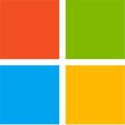Monday, March 25th 2024

Microsoft Patents Resource-Based Ray Tracing, Promises Less Strain on GPU VRAM
Microsoft has filed for a new and even potentially groundbreaking patent that could transform the way ray tracing graphics are processed, especially when video memory (VRAM) is scarce. The patent proposes a technique to minimize the memory footprint of ray tracing graphics, tackling the escalating concerns about the growing memory demands for ray tracing and path tracing. The innovation outlined in Microsoft's patent employs a dynamic level of detail (LOD) approach to adaptively modify the quality of ray tracing effects based on accessible resources. The patent portrays the ray tracing pipeline as an acceleration structure that can be streamlined using this LOD system. The cornerstone of this optimization is a residency map that aligns with a bounding volume hierarchy of objects. The graphics processing system can then utilize this map to ascertain the suitable quality level for objects at any given moment. This methodology enables a more reasonable allocation of resources, guaranteeing that the most crucial objects receive the highest quality rendering. At the same time, less important elements can be rendered at lower quality to conserve memory.
Microsoft's patent could have far-reaching ramifications for the design and performance of upcoming GPUs. By implementing this novel LOD system, GPUs with more modest VRAM capacities, such as those with 8 GB, could provide ray tracing performance on par with higher-end models boasting larger memory buffers, given enough compute capacity. This advancement could pave the way for more budget-friendly GPUs that still deliver adequate ray tracing capabilities, making the technology more accessible. Moreover, the adaptive nature of the LOD system could contribute to a more reliable performance across diverse scenarios, as the GPU would be capable of adjusting to the available resources in real time. Microsoft's patent could emerge as a game-changer in the realm of GPU design and performance, and we are now waiting to see if any real-world implementations appear.
Source:
Tom's Hardware
Microsoft's patent could have far-reaching ramifications for the design and performance of upcoming GPUs. By implementing this novel LOD system, GPUs with more modest VRAM capacities, such as those with 8 GB, could provide ray tracing performance on par with higher-end models boasting larger memory buffers, given enough compute capacity. This advancement could pave the way for more budget-friendly GPUs that still deliver adequate ray tracing capabilities, making the technology more accessible. Moreover, the adaptive nature of the LOD system could contribute to a more reliable performance across diverse scenarios, as the GPU would be capable of adjusting to the available resources in real time. Microsoft's patent could emerge as a game-changer in the realm of GPU design and performance, and we are now waiting to see if any real-world implementations appear.


33 Comments on Microsoft Patents Resource-Based Ray Tracing, Promises Less Strain on GPU VRAM
You won't catch me saying MS is all for sharing... unless it relates to Azure :P
Rather MS is 'assuming control', the first step was DX12 Ultimate (come, come, we have RT!). Nvidia is cornered here: Windows is their primary gateway to selling discrete gaming GPUs. The next step is forcing universal support on their OS. Net result? Windows just got more relevant, Nvidia starts to lose its unique market position, and with that, RT gets more mainstream, solving the chicken/egg problem.
There's a DF video comparing the 6700 to the PS5 (as they are roughly the same gpu), and the RT performance difference is staggering.
VulkanRT also seems to perform better than DirectX, though it seems to use more vram. (Source: forums.developer.nvidia.com/t/ray-tracing-performance-in-optix-vs-vulkan-dxr/260558)
It certainly includes nand memory in the model. The explanation is very broad and repetitive, it doesn't sound like something that will be applied to PC games, it mentions that ASICS could be integrated into the system. it sounds more like something that could be integrated into consoles with specialized hardware.
But the RT Difference was big enough that the 6700 positioned itself alongside the 4060, even beating it a bit.
MS prob isn't too keen on people trying out a game on Game Pass, then potentially buying it for a better price elsewhere once the game isn't part of the rotation. You started in the store; you stay in the store.Yhea, it seems that this is going to be a broad implementation of the tech, beyond the realm of gaming. Maxon Redshift for example use DXR for one of their rendering modes, that new technology might also be used there. I still find it funny that they bothered to mention tape and optical memory :D